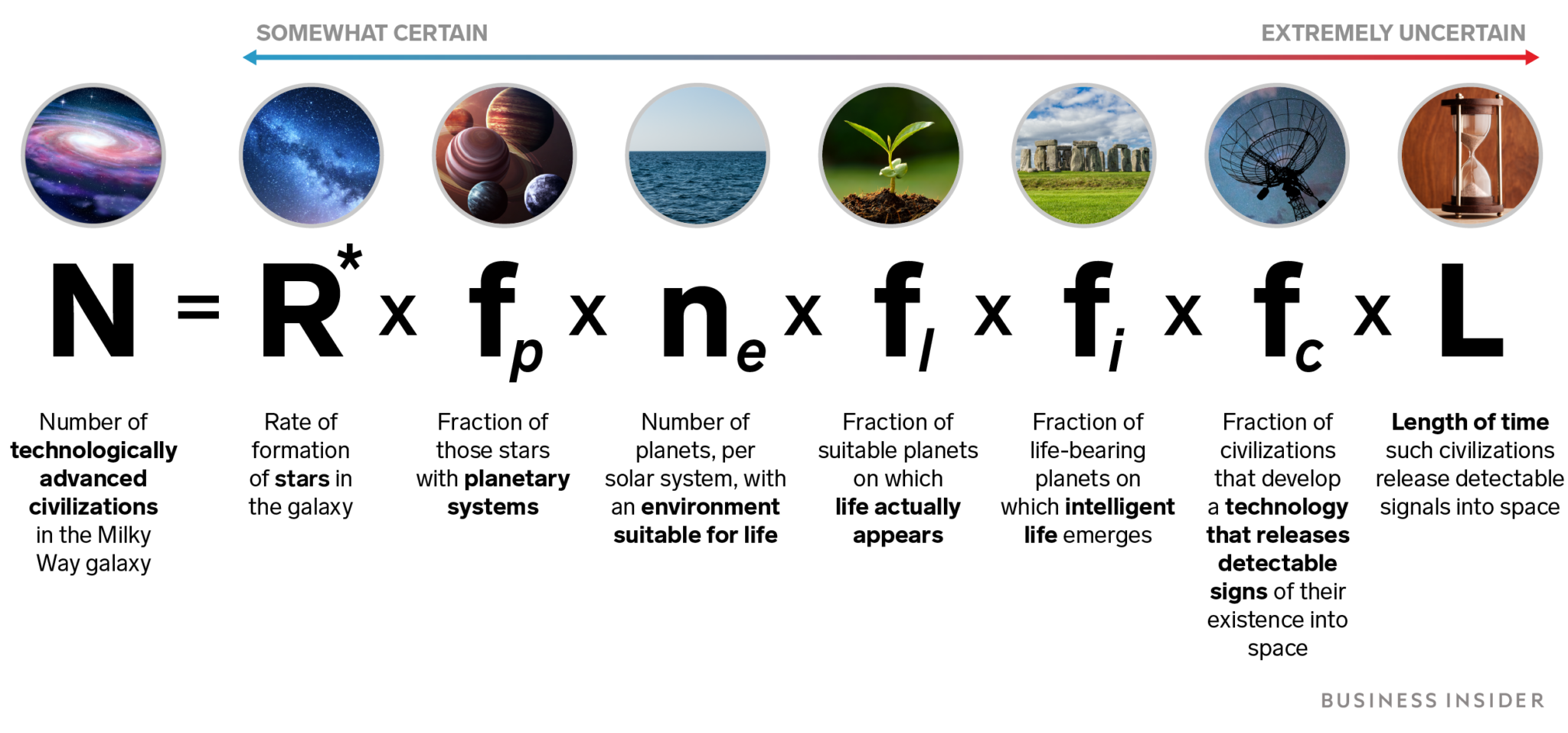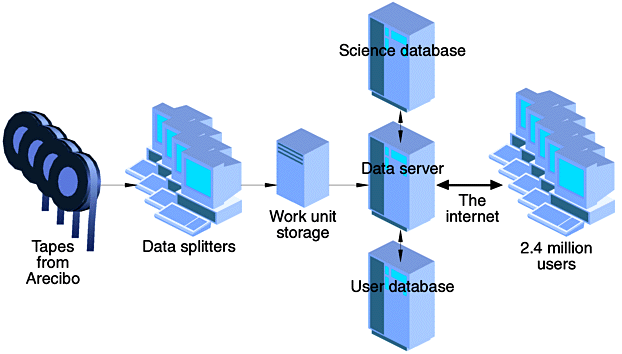The urge to explore, wander into unchartered territories, reach out and establish communication with other beings has been the master key to human civilization. Skies and stars were not a limitation to the imagination, even before humans mastered fire. Centuries later, the proliferation of curiosity, knowledge, science and brilliant advancement in computation around the world lead humans to space exploration and search for extraterrestrial life. There are many who believe with great passion that there is more out there than what can be imagined. Well before the space age, radio pioneers such as Heinrich Hertz, Nikola Tesla, and Marconi were foreseeing ‘interplanetary communication’. Elmer Sperry proposed using a giant array of searchlights to send a beacon to Mars in 1919.
Many people at some point in time or another have looked at a clear, night sky and wondered, “Are we alone?” SETI hopes to, one day, be able to answer that question. The Search for Extraterrestrial Intelligence (SETI) is now known as a collective effort by independent organizations, government agencies, educational institutions, and individuals. Although Sci-fi content producers have invariably made people think of flying saucers and little green or grey aliens, it is important to make a distinction between SETI and “paranormal” research.

Arthur C. Clarke summed it up as “Two possibilities exist: Either we are alone in the Universe or we are not. Both are equally terrifying.”
To accomplish the mission of SETI, two approaches are being used mostly. Debatably categorized as either passive SETI, which relies on receiving communication and listening for radio signals from intelligent alien life or active SETI (also known as METI), by producing communications that may one day be heard by other civilizations.
Passive SETI can easily be understood through concepts of radio communication, such as those broadcasted by television and radio stations, that take the form of a wave that radiates out from a broadcast point in all directions. These waves don’t stop at your radio. In fact, once radio waves reach the vacuum of space, they just go on and on forever. Picture this! Though in need of significant amplification, Television broadcast could be picked up on Mars! Large radio observatories, such as “Big Ear” or the Arecibo Observatory, are configured so that if radio waves produced by a civilization somewhere else ever collide with earth, then we’ll hear them!
Active SETI, also known as METI (messaging extraterrestrial intelligence), has the goal of producing communications to alert other civilizations of our presence. In 1974, the Arecibo Observatory broadcast a high-powered transmission in the direction of a star cluster located approximately 25,000 light-years away.
Assuming there is intelligent life in other parts of the universe, then it is almost certainly rare.

In 1961, Dr. Frank Drake proposed a formula to calculate the number of intelligent civilizations in our galaxy.
The Drake equation model is the number of civilizations in our galaxy with which communication might be possible equal to the multiplication of rate of star creation in our galaxy, the fraction of those having planets orbiting them, the number of exoplanets or planets that have the capability of supporting life, the fraction of those that go into development of an intelligent lifeform, the number of civilizations that could have the capability to communicate and how long can that communication be detected) highly speculative.
Unfortunately, an exact result of the Drake equation has not been reached because of many of the factors in the equation, such as the average rate of star formation which is not fully known.
Another mindboggling argument is the Fermi Paradox, which summarizes as the universe is old and large enough to have even more habitable planets. Yet, where are they? Perhaps we have not been looking long enough.
Only a century ago, scientists and enthusiasts gathered around the concept of scanning the sky and “listening” for puzzling non-random patterns of electromagnetic emissions in order to detect another possible civilization somewhere else in the universe. The SETI (Search for ExtraTerrestrial Intelligence) era began with people such as Frank Drake, Giuseppe Cocconi, Philip Morrison and others suggested and began their first SETI search around 1959-60.

In the late 1960s and early 1970s, NASA took up SETI efforts. at a low-level as Project Orion, the Microwave Observing Project and Toward Other Planetary Systems. On 14 October 1992, NASA initiated a formal 10-year $100m High-Resolution Microwave Survey project, a more intensive, SETI program. However, Congress canceled the program based on political expediency, barely a year later.
Part of the canceled program was picked up by the private, non-profit SETI Institute which was incorporated in 1984. Facing funding challenges every now and then, the SETI Institute currently employs more than 130 scientists, educators, and administrative staff. SETI Institute continues as a non-profit organization and is among the top 100 subcontractors to NASA with ample funding to do research in Astronomy, Astrophysics, Astrobiology, Exoplanets and much more. SETI runs the data pipeline for the Kepler program. Planetary exploration is also another field of research at SETI and the X-Ray diffraction system on Curiosity for Mars developed by the institute. Along with all that, the SETI Institute pursues research for extraterrestrial intelligence using radio and optical technologies built for the same purpose. New directions were for the SETI Institute, under CEO Bill Diamond who took charge in June 2015 including a restructuring of the operations of the Institute, folding the SETI research program into the larger science umbrella of the Carl Sagan Center. Education and Public Outreach has always been an integral part of the Institute, including space science and astrobiology curricula for formal and informal education, the popular radio show/podcast Big Picture Science, the SETI Talks lecture series, public lectures by scientists, and popular science writing. Outreach to the general public via social media and other efforts has received new emphasis as the Institute looks forward to continuing its mission to explore the possibilities of life in the universe and share discoveries with the public.

SETI is usually considered one of the most high risk, and high gain endeavor in all of science and often people say it’s more related to science fiction than to astrophysics but if we were to someday detect alien civilization, this would be one of the greatest discoveries of mankind ever. A famous distributed computing project called SETI@Home uses the BOINC software platform created by the Berkeley SETI Research Center and hosted by the Space Sciences Laboratory, to analyze specific radio frequencies emanating from space. With dexterously designed algorithms, AI could be scientists best shot at helping intercept signs of extraterrestrial intelligence.
With serious ongoing discussions over both approaches to date, another very important matter is post-detection protocol and the preparation for this eventuality even in the absence of confirmed evidence of extraterrestrial intelligence. Such a discussion could lead to the development of a procedure/protocol on this matter. If an alien intelligent lifeform is detected, the message to be prepared for communication should be sent on behalf of all Humankind, rather than from individual countries or groups.
Imagine being born in a closed hall, growing up and meeting people of your kind who have been confined to the same hall, many having everything good in life to live with and then eventually pass away. Would you not want to look outside and explore beyond the walls of the hall? Would you have the urge to seek even a tiny hint to the plethora of unanswered questions such as “Among the septillion stars in the known universe, are we alone?”
Also Read: Viking: NASA’S Mars exploration program

Inspired by profound significance for mankind of detecting extraterrestrial intelligence, the author signed up to SETI@homeBOINC as the first user from Pakistan in 1999. The author is a registered team member of SETI Institute’s online community in Sep 2012 and till date pursues in the research for extraterrestrial life.

